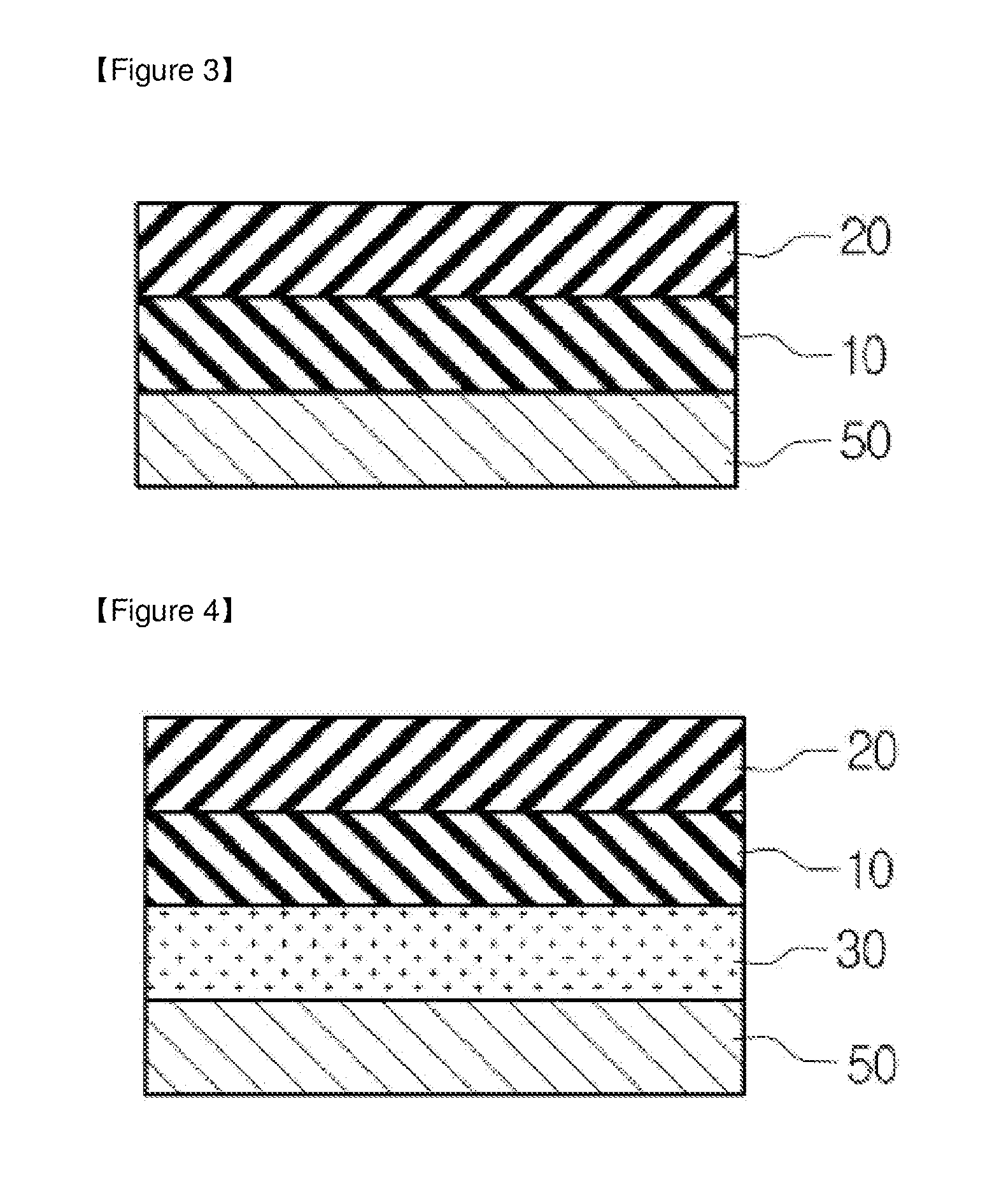Back sheet for solar cells and method for preparing the same
a solar cell and back sheet technology, applied in the field of back sheets for solar cells and a method for preparing the same, can solve the problems of low solar cell efficiency, low manufacturing cost efficiency, and low power generation efficiency of solar cells, and achieve good heat dissipation, good heat dissipation, and manufacturing cost efficiency.
- Summary
- Abstract
- Description
- Claims
- Application Information
AI Technical Summary
Benefits of technology
Problems solved by technology
Method used
Image
Examples
experiment 1
Measurement of Heat-Dissipating Property
[0047]A PVDF layer is formed on one side of a PET substrate. Next, a heat-dissipating ink layer is formed on the other side of the PET substrate to have a thickness of 25 μm, thereby preparing a back sheet for solar cells (Example 1, FIG. 3). In a variant, a PVDF layer is formed on one side of a PET substrate, an aluminum (Al) layer is formed on the other side of the PET substrate to have a thickness of 80 μm, and a heat-dissipating ink layer is formed on the aluminum (Al) layer to have a thickness of 25 μm, thereby preparing a back sheet for solar cells (Example 2, FIG. 4). In another variant, a PVDF layer is formed on one side of the PET substrate, an aluminum (Al) layer is formed on the other side of the substrate to have a thickness of 80 μm, a phosphate-based metal anti-corrosive layer is formed on the aluminum (Al) layer to have a thickness of 1 μm, and a heat-dissipating ink layer is formed on the metal anti-corrosive layer to have a th...
PUM
| Property | Measurement | Unit |
|---|---|---|
| thickness | aaaaa | aaaaa |
| thickness | aaaaa | aaaaa |
| thickness | aaaaa | aaaaa |
Abstract
Description
Claims
Application Information
 Login to View More
Login to View More - R&D
- Intellectual Property
- Life Sciences
- Materials
- Tech Scout
- Unparalleled Data Quality
- Higher Quality Content
- 60% Fewer Hallucinations
Browse by: Latest US Patents, China's latest patents, Technical Efficacy Thesaurus, Application Domain, Technology Topic, Popular Technical Reports.
© 2025 PatSnap. All rights reserved.Legal|Privacy policy|Modern Slavery Act Transparency Statement|Sitemap|About US| Contact US: help@patsnap.com



